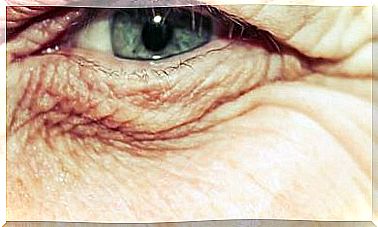What Does The Brain Do When You Sleep?
At night you take a trip that you only have glimpses of in dreams. But it is a necessary journey, in which the brain works at full capacity.

Although great creative geniuses such as Leonardo da Vinci or Thomas Alva Edison slept two or three hours a day, it is necessary to sleep between 7-9h. Sleeping is not a waste of time, but an essential activity for physical health, cognitive learning and emotional stability.
Preparing to enter the dream properly and preparing, caring, this state is an invaluable way to contribute to well-being and personal development.
Avoid insomnia by knowing the phases of sleep
To consider that a situation of insomnia occurs , it is necessary that there is a difficulty in starting or maintaining sleep, the feeling that it is not restorative or that it causes some type of dysfunction in life.
In aging there is a reduction in total sleep time, but the common cause of the alteration of the circadian rhythm at any age is to be found in the lifestyle (work and leisure habits, stress, diet …).
Another cause of insomnia are drugs, such as antihypertensives, beta-blockers, hormones, oral contraceptives, bronchodilators, caffeine and many more, so common in a polymedicated society like ours. Often times, the onset of insomnia is addressed with more medications, starting a dangerous therapeutic cascade.
How to avoid insomnia
The keys to avoiding insomnia are:
- Introduce healthy eating habits, physical exercise, rest and stress management.
- Wake up early and receive the morning light.
- In the afternoon, reduce the stimuli until it is time to sleep.
Knowing what awaits us at night, the functions of sleep, will help us improve our relationship with sleep.
The nature of the dream
The dream is a state of mind mysterious and poorly understood, which meets many basic functions such as physiological restoration, learning and restructuring of consciousness.
It is characterized by its rhythmicity. The cycle of wakefulness and sleep is determined by physical, biological, work and social factors, which make sleep a partially modifiable state at the will of the person. On the other hand, within the hours of sleep there is also a rhythm that marks the different phases.
Sleep develops an important psychological function, since many activities remain unfinished during wakefulness, both cognitively and emotionally, and it is sleep that facilitates the processing, integration of information and the restructuring of lived experiences.
Deprivation of less than 4 and a half hours of sleep affects health. Voluntary reduction generates fatigue, deficits in the execution of tasks and feelings of sadness. If the shortening regimen persists, the REM phase begins earlier, with the aim of maintaining an adequate psychological state.
Each person has their needs
There is great variability between people, but the decrease in sleep time in REM phase alters learning and memory processes, and produces emotional overload, by lacking emotional attenuation and de-dramatization of waking experiences.
- People who need fewer hours of sleep are more outgoing, and generally have a greater capacity for psychological adaptation.
- People who need more hours of sleep tend to present a more introverted profile, are more thoughtful, original and with greater creative capacity.
The different needs are related to the functions of each phase of sleep :
- REM phase, dreams are intense and take on a dramatic character; they are the ones we remember best and are accompanied by a significant emotional charge.
- Slow wave phase (non-REM), are usually of a more rational type, related to recent events and of less perceptual intensity.
Dreams and dream images
Be that as it may, daydreams are hallucinatory experiences, where the temporal, spatial and personal dimensions appear distorted and highly emotionally charged.
The metaphorical character of daydreams seems to point in a Freudian sense to the satisfaction of unfulfilled desires during waking hours, which softens trauma and conflict situations.
The dream images are authentic hallucinatory experiences at the service of an extravagant script that, however, is not strange. Impossible events appear that are perceived as real, cognitive perception is distorted and an unexpected emotional elaboration appears. An emotional courtship, with anxiety, fear, sadness or joy, makes up the entire dream experience.
At the beginning of sleep, the dream production tends to take on a more negative tint and as the night progresses it becomes neutral until a positive tone appears, which allows to stabilize emotions and attenuate negative feelings.
The dream state, a journey from the body to the mind
The dream state that we naturally live each day presents us with a great mystery that remains unsolved. In the waking state we are aware of our body, we inhabit the physical realm of the world of the body, with physical, mental and emotional presence.
On the other hand, in the dream state with dreams, a more subtle world appears, where the physical consciousness of the body disappears and only the world of the mind remains, full of thoughts, images and sensations.
As we enter a state of deep sleep, physical sensations, images and emotions are hidden so that a world emerges where only the vibration of the soul remains, just as meditation teachers are able to consciously experience in that state. state.
A subtle consciousness awakens
When we begin to sleep, the most physical sensations, then mental and finally emotions, give way to a vast field of fullness, calm and peace, which is always present, also now, in these moments of reading, although covered by the noise of physical and mental consciousness.
These sensations are progressively lost in the deepening state of sleep, but there is something that is always there: a subtle, permanent awareness that after gradually eliminating layers, becomes more evident, clear and present.
Every night during the hours of sleep, we die on the physical plane and appear and perform elsewhere. Perhaps the dream process represents a small death, as considered by Tibetan culture, which allows the learning and conscious experience of the great final death.
How to put consciousness in sleep
Learning to align yourself before going to bed, practicing breathing exercises, cardiac coherence (combining meditation, breathing and visualizations) or meditation, is a good way to bring awareness to the dream state.
Different techniques allow you to fall asleep with your focus on the chest or heart area. Anchoring the consciousness in the highest part of the head requires experienced practice and is not recommended for the neophyte. Putting a gentle conscience on the chest favors the correct recollection of energies and induces a harmonious and productive sleep.
At the time of falling asleep it is useful to do an exercise to recapitulate the experiences of the day, from those closest to the evening until the beginning of the day, paying attention to the most significant moments and full of learning. According to their belief system, some people ask for protection, guidance, and service, allowing them to sink into rest with higher thoughts.
Slow transition from wakefulness
Paying attention to the dividing line between being asleep and awake and crossing the threshold consciously, allows you to direct the intention towards which planes will be visited at night, and to bring about conscious learning in the morning.
That rich experience is lost when the threshold is crossed too quickly and without awareness. Inducing a slow awake-asleep transition, through progressive relaxation, allows exploration of that razor’s edge, where it is possible to be both awake-asleep and conscious.
Establishing a firm resolution before going to sleep allows you to recover the memory of what you experienced during the night the next morning.
How to prepare a great dream
- Make the bedroom a pleasant, orderly and quiet space.
- There is no place for televisions, computers or mobiles.
- The bed should be comfortable and better if the structure is made of wood, to avoid any factor of electromagnetic pollution.
- Try to have dinner about 3 hours before going to bed and that the intake is not copious or of foods that are difficult to digest.
- A hot bath is relaxing. You can add sea salt, baking soda, and a few drops of sage essential oil.
- As much as possible, go to bed and get up at the same times every day, including the weekend.
- Stimulants, such as caffeine, should be avoided in the last 4-6 hours of the day, which is the time the body needs to eliminate it.
- Before going to sleep, avoid any intense stimuli. It is time for calm.
- The room must be completely dark.
- The most comfortable temperature for sleep is between 16 and 22 degrees. Avoid excess bedding and ventilate well during the day.
- Practice a breathing, relaxation or body awareness technique (yoga, tai chi, heart coherence, progressive relaxation…) and use it before going to sleep, outside or in bed.









